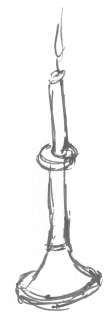SPRING FORWARD, LITTLE BEES? NO, FALL BACK!
It was an unusually warm winter day, a week before the winter solstice, in a place where the climate is pretty mild. When I say warm, I mean as in the lower 60s with no appreciable wind. I missed my bees, now consolidated into just two strong hives to make it through the winter rains, cold, and darkness, so I ambled into the b'yard—my backyard as well as my “bee yard.”
Both hives were located right next to the southern fence. The sun at the solstice is so low on the horizon that the hives weren't getting direct light during the day. I thought about moving them into a warmer spot, but doing so is a several day project of incremental moves. That's because bees get so oriented to an exact hive location that they'll get confused if their home moves more than maybe six to twelve inches at a time. They'll reportedly go to the spot where their hive had been, and just stand around until it gets dark and they freeze to death, alone and confused.
(At least, that's the story often told in beekeeping circles, although you'd think they'd be able to figure it out by seeing or smelling out their hive a few feet away. But in the winter, I really didn't feel like testing that theory out on my bees, thank you very much.)
Anyway, despite being in perpetual shade, they were flying off in all directions. No lolligagging around the front of the hive, more like a fast-motion movie of JFK Airport. Vroom! Zoom! Whoosh!
I slid around the side of their flight path and sat on an empty hive a few feet away to watch. I was dressed in light colors, out of the sight lines of any guard bees that might be lurking around inside the front entrance, so I (correctly) guessed that they'd ignore me.
Sitting there was good for my soul, like spending time with an old friend I hadn't seen for a few months. They looked healthy. I watched the incoming flights, looking for pollen hanging off their legs. I didn't see any, which I took as a good sign. Pollen is for the larvae. This time of year, the bees shouldn't be worrying about that; they should be minding their honey supply to make it through the weeks when they can't get outside. It's a few months too early to be raising young ones for the new season, but sometimes they get confused by mild weather, potentially setting themselves up for too little honey and cold-killed larvae when they get hit with winds and 38- degree rains in January and February.
Luckily, something's usually blooming around here year-round. The bees might find some late clover blossoms or some early eucalyptus blossoms, both good for honey; finally, in very early spring, at the time when they'll start thinking about ramping up on the raising of babies, they'll find the feral rosemary that blooms in the winter next to the shoreline. Forget about robins or groundhogs or returning geese; the harbinger of spring for me is seeing the rosemary pollen, white as the coastal fog, coming in on little bee legs.
No Snow
Yes, I am grateful that I'm not raising bees in a place that has real winters. It's possible to do it. You may have to wrap up your hives in insulation, leave a lot more honey inside for the bees, and brush the snow off the landing boards during every storm so they won't suffocate, but it's possible. I'm just glad I don't have to do any of those things.
SMELLS LIKE BEE SPIRIT TO ME
In the winter I burn a candle when I write. It focuses me, and keeps me from wandering away from the desk. Not just because I'm somewhat phototactic like a moth, drawn toward a flickering light source, but also kept there, being somewhat afraid of leaving a fire untended, presumably like a ladybug afraid her children may burn.
That's only part of the reason I do it, of course. I burn beeswax candles from my own hives. I love the smell—who doesn't? It's such a mix of the smell of flowers' nectar and the bugs that eat it exclusively. If there were such a thing as flower fairies, this is what they'd smell like—equal parts animal and vegetable with a little magic binding it together in a pleasing balance.

The inside of a healthy beehive smells something like this, but it's an indescribable thing as well. The easiest way to explain the aroma would be to simply send you on a field trip to a bee yard, to have you standing close when the beekeeper opened the hive, but that's an assignment I can't facilitate or enforce, so let me try to explain the scent. Imagine honey. It's got a purely floral smell, right? Now imagine the smell of a beeswax candle. A little different, right?
Now, imagine subtracting the smell of honey from beeswax. What you have left is the smell of the bees. Multiply that leftover part of the smell by two. Wait, you're not done yet! Okay, now the hard part of the math equation. Imagine that doubled wax smell, but with the smell of the honey added back. That will give you approximately what the inside of a beehive smells like. If it would help, here's the equation:
(W[ax scent] - H[oney scent]) X 2 + H = B[eehive scent].
Now, isn't that clear? What, no? Well, don't feel bad, not everybody can be mathematical.
